How to Save Plants After a Frost: Critical Steps to Prevent Total Loss
- June 28, 2024
- 0 comment
Learn how to save plants after a frost with critical steps to prevent total loss. Protect your garden effectively with our expert tips. Frost can be a major threat to your garden, but with the right approach, you can keep your plants safe and healthy. This guide will show you how to save plants after a frost, providing practical steps to prevent total loss.
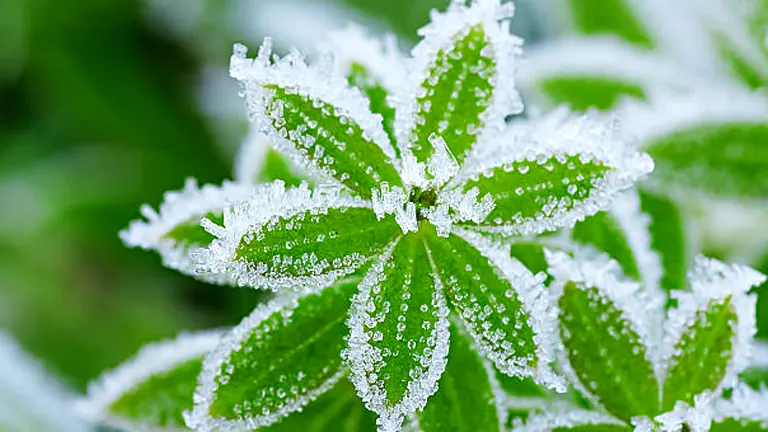
We’ll discuss immediate actions to take and preventative measures to implement, helping you maintain a thriving garden even in cold weather. Follow along as we offer simple yet effective strategies to manage frost and ensure your garden’s resilience.
Table of Contents on How to Save Plants After a Frost
- Understanding Frost and Its Effects on Plants
- Immediate Actions to Take After a Frost
- Assessing Plant Damage
- Recovery Strategies for Frost-Damaged Plants
- Preventative Measures for Future Frosts
- Advanced Tips and Techniques
- Conclusion
- FAQs
Understanding Frost and Its Effects on Plants
What is Frost?
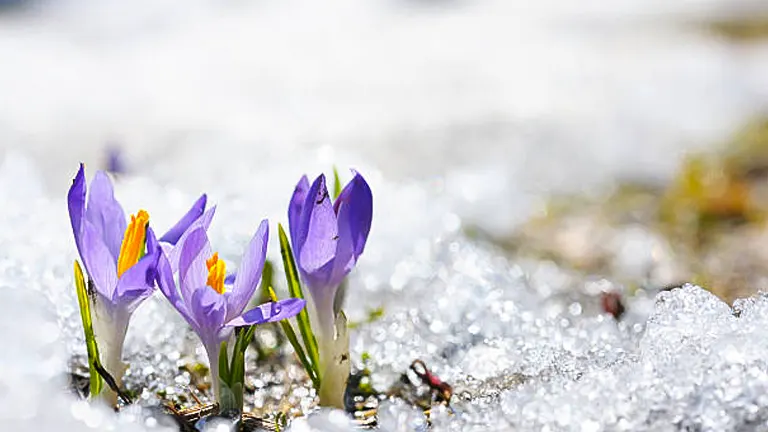
Frost occurs when the temperature of the earth’s surface and earthbound objects falls below freezing (0°C or 32°F). This condition typically develops under clear skies with calm winds, allowing the heat from the surface to radiate into the atmosphere more efficiently. The air near the ground cools to a point where water vapor in the air condenses and then freezes, forming ice crystals on surfaces. This phenomenon can occur in two forms: hoar frost, which is a white frost that forms a continuous fine layer of ice crystals, and rime, which is less frequent and occurs quickly, typically in windy conditions, leading to a rough, milky ice deposit.
Scientific Insights into Plant Cell Damage by Frost
When frost forms, the water inside the plant cells can freeze and expand, causing the cell walls to rupture. The damage is not only physical but also biochemical, as ice formation within the tissues leads to dehydration and increased solute concentration, which can be toxic to cells. This intracellular ice formation is more detrimental than the extracellular formation, as it directly disrupts cellular integrity.
Effects of Frost on Various Plant Types
| Plant Type | Typical Damage Manifestation | Temperature Threshold (°F) |
|---|---|---|
| Tender Annuals | Complete wilting and death | 32°F |
| Hardy Perennials | Leaf burn, partial damage | 28-32°F |
| Woody Shrubs | Bud damage, bark split | Below 25°F |
| Evergreens | Foliage browning, desiccation | Below 20°F |
Effects on Plants
The impact of frost on plants varies significantly based on the plant’s species, age, and health, as well as the duration and intensity of the frost. Light frosts may damage only the tender new growth of more resilient plants, which can recover with minimal intervention. However, a hard frost can cause extensive damage to a wide range of plants, including mature and typically hardy species. Crucial factors influencing a plant’s vulnerability include its dormancy status, hydration level, and cell composition.
- Dormancy and Hydration: Plants in dormancy are less likely to be damaged as their metabolic and water activities are reduced. Similarly, well-hydrated plants can resist frost better due to the dilution of solutes in their cells, which lowers the freezing point.
- Adaptive Features: Some plants have evolved mechanisms such as antifreeze proteins, which inhibit ice formation within their tissues, and extracellular freezing, where ice forms outside cells, sparing the vital internal machinery.
Recovery and Adaptation
Plants’ ability to recover from frost damage depends on the extent of damage and the immediate care provided. Recovery techniques include proper pruning of dead tissues, controlled watering, and shielding from further environmental stressors. Studies have shown that plants can adapt over generations to withstand lower temperatures through genetic changes that affect cell wall composition and increase solute concentration, enhancing their frost tolerance.
Immediate Actions to Take After a Frost
Assessing the Damage
Rapid assessment of frost impact is crucial to determine the necessary recovery steps. As temperatures drop below freezing, the frost’s effect on plants can vary, making early morning inspections vital. Look for:
- Wilting: This is often the first sign of frost damage, where leaves lose their rigidity due to ice formation disrupting cell structure.
- Softness: Indicates ice has formed inside tissues, expanding and potentially rupturing cell walls.
- Dark, Water-Soaked Tissues: These symptoms arise from cell contents leaking as ice melts, leading to decay.
Protection Measures
Preventative actions can mitigate frost damage if implemented timely:
- Watering: Irrigating your garden in the evening before a frost can protect plants. Moist soil retains more heat than dry soil, releasing it overnight and keeping air temperatures around the plants slightly higher, thus reducing frost duration and intensity.
- Covering: Utilizing insulating materials such as frost cloths, burlap, or even old bed sheets helps trap heat. Proper coverage involves securing the material so it extends to the ground on all sides, optimizing heat retention.
Efficacy of Various Covering Materials
| Material | Insulation Quality | Expected Frost Protection (°F) |
|---|---|---|
| Frost Cloth | High | Up to 4-8°F above ambient |
| Burlap | Medium | Up to 2-4°F above ambient |
| Old Bed Sheets | Low | Up to 1-2°F above ambient |
Using Environmental Data for Precision
For those seeking a more scientific approach, integrating environmental data like temperature and humidity levels can guide the timing and method of frost protection. Instruments such as digital thermometers or weather stations can provide real-time data, allowing for precise adjustments to your frost protection strategy.
Assessing Plant Damage
Evaluating the Extent of Damage
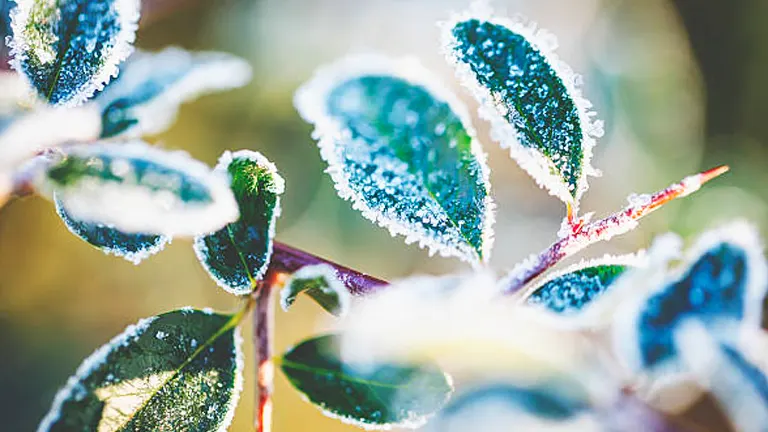
After a frost, a detailed assessment of each plant is essential to determine the appropriate recovery strategies. The initial step is to evaluate the foliage, as frost damage often causes leaves to darken and shift from their natural green to shades of brown or black. This discoloration is a result of the freezing and subsequent thawing of cell contents, leading to cell rupture and tissue necrosis.
When examining the texture of the leaves and stems, it is typical to find them softened and limp, a direct consequence of ice crystals that disrupt the cell structure. This damage makes the tissues waterlogged and structurally weak. Further, inspect the stems for any cracks or splits, which are indicative of the physical expansion of water as it freezes inside plant tissues.
Diagnostic Features of Frost Damage in Plants
| Feature | Description | Common in Type of Plants | Diagnostic Action |
|---|---|---|---|
| Discoloration | Leaves turn dark brown or black | All frost-exposed plants | Visual inspection |
| Softened Texture | Leaves and stems become limp | Herbaceous plants | Tactile examination |
| Cracks/Splits | Stems show physical ruptures | Woody plants | Detailed physical check |
Determining Plant Viability
Understanding which plants can recover from frost damage involves assessing their overall vitality and the severity of the damage:
- Perennials: These plants are more likely to survive as their root systems are generally robust enough to withstand above-ground damage. They can regrow from their roots with proper post-frost care.
- Annuals and Delicate Plants: These are less likely to recover from severe frost damage. If these plants display extensive visible injuries, it usually suggests irreversible damage, necessitating their removal to prevent the spread of decay and diseases within your garden.
Recovery Strategy
The recovery process should be cautiously approached to encourage effective regrowth:
- Pruning: Remove all visibly damaged parts to prevent the spread of decay and potential disease. This should be done during dry conditions to facilitate clean cuts that heal quickly.
- Water Management: Adjust watering schedules to ensure the soil is moist but not soggy. Overwatering can further stress the already weakened plants.
- Delayed Fertilization: Hold off on fertilizing until signs of new growth are evident to ensure that nutrients support healthy new tissues rather than the damaged ones.
Implementing these steps will help stressed plants recover gradually and can significantly boost your garden’s resilience against future frost events.
Recovery Strategies for Frost-Damaged Plants
Facilitating Healing and Regrowth
Recovery from frost damage requires a systematic approach that starts with assessing the extent of damage and then moving to nurture the plants back to health.
- Strategic Watering Regimen: Watering plays a critical role in the recovery of frost-damaged plants. It’s essential to water in the early morning to allow plants to absorb moisture before the temperature drops again in the evening. This timing helps in preventing ice formation at night which can cause further damage. Additionally, maintain soil moisture at a level that supports recovery but avoids waterlogging, which can suffocate roots and lead to fungal diseases. Soil moisture content ideal for recovery varies, but typically, keeping the soil at about 25-30% volumetric water content supports healing without risking water stress or root rot.
- Nutritional Support: Post-frost recovery also involves carefully timed fertilization. Initially, hold off on fertilizing as damaged plants may not effectively use the nutrients, and excess can exacerbate stress. When signs of new growth appear, indicating active recovery, introduce a balanced, slow-release fertilizer. The nutrient ratio should be tailored to the specific needs of the plant species but generally, a lower nitrogen content relative to phosphorus and potassium can help in supporting root growth over leaf production.
Watering and Fertilization Guidelines for Frost Recovery
| Plant Type | Ideal Soil Moisture (%) | Fertilizer Type | Application Timing |
|---|---|---|---|
| Tender Annuals | 25-30 | High phosphorus content | After signs of new growth |
| Hardy Perennials | 30-35 | Balanced slow-release | After signs of new growth |
| Woody Shrubs | 30-35 | High potassium content | Mid-recovery phase |
| Evergreens | 25-30 | Low nitrogen, high potassium | Prior to next growing season |
Supporting Structures
- Physical Support: For plants that have sustained significant stem damage, physical supports such as stakes or ties are crucial. These aids help keep the plants upright and facilitate proper growth orientation, which is essential for their recovery and future growth stability. Ensuring that damaged plants grow straight helps not only in aesthetic terms but also improves their physiological health by promoting better sunlight exposure and air circulation around the foliage.
Implementing these strategic steps can significantly enhance the recovery rate of frost-damaged plants. By understanding the specific needs of each plant type and adjusting care practices accordingly, gardeners can help their plants not only survive but thrive after experiencing frost damage.
Preventative Measures for Future Frosts
Selecting Frost-Resistant Varieties
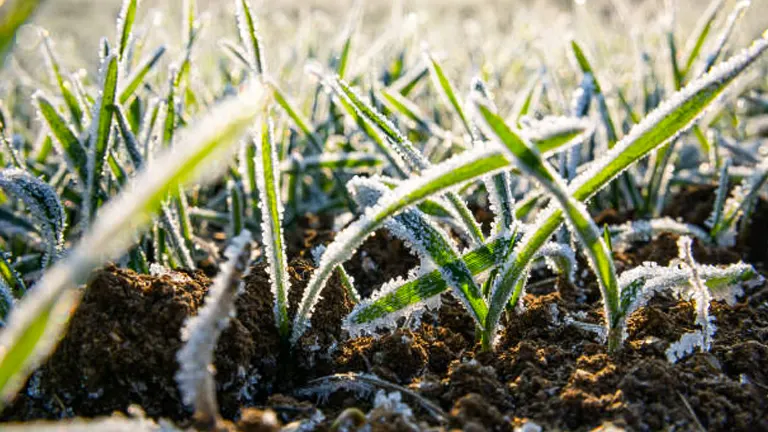
Choosing the right plants is the first line of defense against frost. Opt for species known for their resilience to low temperatures. For instance, plants like Sedum and Hellebores are renowned for their ability to withstand early frosts. Additionally, native plants are adapted to local climate extremes and typically recover from environmental stresses more effectively than non-native species.
Creating a Microclimate
Developing microclimates within your garden can dramatically enhance the survivability of your plants during cold spells. This involves strategic planting and landscape modifications:
- Location: Plant sensitive varieties in locations that naturally accumulate daytime heat, such as near south-facing walls.
- Windbreaks: Utilize natural or artificial barriers such as shrubs, trees, or even garden structures to reduce wind exposure, which often exacerbates the effects of cold temperatures.
- Mulching: Applying a thick layer of mulch around the base of plants helps to maintain soil temperature and moisture, which are crucial during sudden temperature drops.
Microclimate Strategies for Frost Protection
| Strategy | Description | Benefit |
|---|---|---|
| Plant Positioning | Planting near heat-retaining structures like walls | Increases nighttime temperatures by 2-5°F |
| Windbreaks | Using trees or structures to shield from wind | Reduces wind chill, stabilizing air temps |
| Mulching | Applying organic materials around plant bases | Insulates soil, minimizes temperature fluctuations |
Seasonal Adjustments
Tailor your gardening practices to the changing seasons to reduce vulnerability to frost:
- Water Management: In late fall, gradually reduce watering to decrease soil moisture, which can lead to ice formation around plant roots. This practice encourages plants to harden off, reducing the likelihood of frost damage.
- Soil Drainage: Ensure that your garden has adequate drainage to prevent water from accumulating and freezing around plant roots, which is one of the primary causes of root damage during frosts.
Advanced Tips and Techniques

To further safeguard your garden from the harsh impacts of frost, adopting more sophisticated methods can make a significant difference. Here’s how to integrate advanced frost protection techniques into your gardening practices:
Utilizing Cloches and Frost Blankets
Protecting individual plants or smaller sections of your garden with cloches and frost blankets can provide a critical temperature buffer during unexpected cold nights. These tools work by trapping heat around the plant, significantly reducing the likelihood of frost damage.
Soil Warming Techniques
Employing soil warming techniques can also play a pivotal role in protecting your garden. Methods such as laying black plastic sheets over the soil can absorb and retain heat during the day, releasing it during the cooler night. Additionally, soil heating cables can be installed for a more consistent warming effect, particularly beneficial for very tender plants or in gardens with severe frost conditions.
Timing Plant Cycles
Adjusting the timing of your planting and pruning activities is crucial to avoid the vulnerability windows of frost exposure. Delay planting new seedlings until the threat of the last frost has passed. Similarly, avoid pruning too late in the season as it can spur new growth that is particularly susceptible to early frosts.
Related Post
- How to Build a Barn: A Step-by-Step Guide for Beginners
- How to Build a Sustainable Compost Bin: Easy and Eco-Friendly DIY
- How to Fertilize Bougainvillea: A Complete Guide for Stunning Blooms
- How to Fertilize Apple Trees: Essential Tips for a Bountiful Harvest
- How to Fertilize Lemon Trees: Secrets for Thriving Citrus
- How to Fertilize Avocado Tree: A Step-by-Step Guide for Lush Growth
- 10 Best Bow Saws to Buy in 2024: Top Picks for the Money
- Best Miter Saw For Beginners
- Top 10 Pruning Saws to Buy in 2024: Best for the Money
- 7 Best Pocket Chainsaw
Conclusion
In conclusion, safeguarding your garden from frost involves timely measures and strategic foresight. By quickly addressing frost damage and utilizing preventive techniques, your garden can recover and resist future cold spells. Keeping a garden journal and engaging with other gardeners can further enhance your readiness for each gardening season, ensuring your plants remain robust and vibrant.
FAQs
- What are the first signs of frost damage on plants?
The first signs of frost damage typically include discolored leaves that may turn dark brown or black, and wilted or soggy texture. Flowers and buds might also appear limp and discolored. These symptoms indicate that the plant cells have been damaged by freezing temperatures. - Can watering plants help prevent frost damage?
Yes, watering plants the night before a frost is expected can help prevent damage. Moist soil retains heat better than dry soil, which can provide some warmth to plant roots during cold nights. However, avoid overwatering as this can lead to other issues like root rot. - Is it possible to save a plant after it shows signs of frostbite?
It is possible to save many plants even after signs of frostbite, especially perennials. Remove damaged parts to prevent decay and disease, and provide proper care (such as appropriate watering and eventually fertilizing) to encourage recovery. However, the extent of recovery can vary based on the plant species and the severity of the frost damage. - What is the best way to cover plants to protect them from frost?
The best way to cover plants is using frost cloths or burlap that drapes down to the soil on all sides. Secure the covers to the ground to trap heat more effectively. Plastic should generally be avoided unless it’s held away from foliage, as it can cause damage if it touches the plants. - How soon after a frost should I check my plants for damage?
Check your plants for damage as soon as possible after a frost, preferably in the morning. This quick assessment allows you to take immediate steps to mitigate any damage and begin recovery processes right away. - Are there any household items I can use for emergency frost protection?
Yes, you can use household items like old bed sheets, blankets, or even large cardboard boxes as emergency frost protection. Make sure to remove these covers during the day to allow for light and air circulation and to prevent overheating. - How can I tell if my frost-damaged plant is beyond recovery?
If a plant remains limp, discolored, and shows no signs of new growth several weeks after implementing recovery measures, it might be beyond saving. Woody plants that are brittle and snap easily or have extensive bark damage are also likely irrecoverable. - What preventative measures can I take to minimize frost damage in the future?
To minimize future frost damage, consider planting frost-resistant varieties, mulching around the base of plants to insulate roots, and creating windbreaks to reduce exposure. Also, adjusting planting schedules to avoid the coldest parts of the year can help prevent frost damage.
With these critical steps, you’re now better equipped to protect your garden from frost and help your plants recover if damage occurs. Stay vigilant and proactive to keep your garden thriving through the cold. Happy gardening!

Benjamin Brooks
Forestry AuthorGreetings! I'm Benjamin Brooks, and my journey over the past 15 years has revolved around the fascinating realms of content creation, expertise in snow clearing, and the intricate world of lumberjacking and landscaping. What began as a simple curiosity about the natural world and heavy machinery has evolved into a passionate profession where my love for crafting words intertwines seamlessly with my lumberjacking and garden skills.






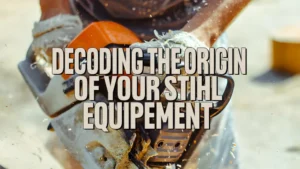






Leave your comment